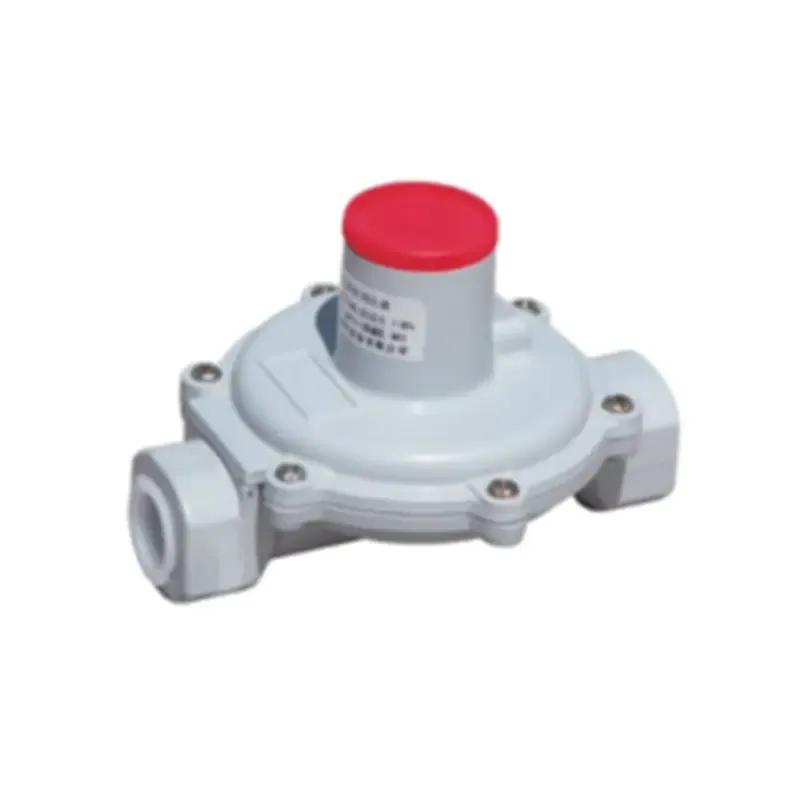
Dec . 04, 2024 15:45
Back to list
Gas Safety Relief Valve for Enhanced Protection and Effective Pressure Management
Safety Relief Valves for Gas A Crucial Component in Industrial Safety
In various industrial processes, the handling of gases presents inherent risks, such as pressure buildup and potential leaks. When working with gases, safety becomes paramount, and one of the key components in ensuring a safe working environment is the safety relief valve, also known as a pressure relief valve or safety valve. This article explores the significance of safety relief valves in gas systems, their operation, and maintenance requirements to safeguard both personnel and equipment.
Understanding Safety Relief Valves
A safety relief valve is a vital device designed to protect pressurized systems from overpressure conditions. In gas applications, these valves are engineered to open when the pressure exceeds a predetermined limit, allowing excess gas to escape safely, thus preventing potential explosions or catastrophic failures. Safety relief valves can be found in various applications, including natural gas pipelines, refineries, and chemical processing plants.
These valves come in several forms, with two primary types being spring-loaded and pilot-operated valves. The spring-loaded valve is the most common type, relying on a spring mechanism to keep the valve closed until the pressure threshold is reached. Once the pressure exceeds this threshold, the spring compresses, allowing the valve to open and release excess gas. Pilot-operated valves, on the other hand, use a separate pilot valve to control the larger main valve, which can provide greater precision in pressure control.
Importance of Safety Relief Valves
The importance of safety relief valves cannot be understated. In gas systems, an uncontrolled increase in pressure can lead to devastating consequences, such as equipment failure, fires, or even loss of life. By providing a reliable means of pressure relief, these valves play a crucial role in
1. Preventing Equipment Damage Excessive pressure can lead to structural failures in tanks, pipes, and other equipment. Safety relief valves help maintain pressure within safe limits, thus prolonging the life of these assets.
.
3. Environmental Protection Uncontrolled gas release can not only be dangerous but can also have detrimental effects on the environment. Safety relief valves help prevent leaks that could harm local ecosystems and contribute to air pollution.
صمام تنفيس أمان الغاز

4. Regulatory Compliance Many industries are subject to strict regulations concerning pressure relief systems. Ensuring that safety relief valves are properly installed and maintained is essential for compliance with local laws and standards.
Maintenance and Inspection
For safety relief valves to function effectively, regular maintenance and inspection are essential. Over time, these valves can become corroded, clogged, or otherwise compromised, which can impede their performance. Implementing a routine inspection program helps identify potential issues before they become serious problems.
Key maintenance practices include
- Regular Testing Safety relief valves should undergo periodic testing to ensure they open at the correct pressure. This can be performed through a controlled pressure increase procedure.
- Cleaning Accumulation of dirt or debris can affect the valve's operation. Regular cleaning is necessary to keep the valve in optimal condition.
- Replacement of Parts If a valve is found to be faulty during inspection, replacing worn or damaged parts, such as springs or seals, is crucial for maintaining safety.
- Documentation Keeping thorough records of inspections, maintenance activities, and any repairs can help in compliance audits and in assessing the overall safety of gas systems.
Conclusion
Safety relief valves are an essential component in the management of gas systems, underscoring the importance of safety in industrial operations. Their role in preventing catastrophic failures, protecting personnel, and maintaining compliance with regulations is vital. By prioritizing regular maintenance and adherence to safety standards, industries can ensure that these critical devices function as intended, ultimately safeguarding lives, property, and the environment. Understanding the significance of safety relief valves in gas systems is a step toward fostering a culture of safety and responsibility in all industrial applications.
Latest news
-
Safety Valve Spring-Loaded Design Overpressure ProtectionNewsJul.25,2025
-
Precision Voltage Regulator AC5 Accuracy Grade PerformanceNewsJul.25,2025
-
Natural Gas Pressure Regulating Skid Industrial Pipeline ApplicationsNewsJul.25,2025
-
Natural Gas Filter Stainless Steel Mesh Element DesignNewsJul.25,2025
-
Gas Pressure Regulator Valve Direct-Acting Spring-Loaded DesignNewsJul.25,2025
-
Decompression Equipment Multi-Stage Heat Exchange System DesignNewsJul.25,2025

